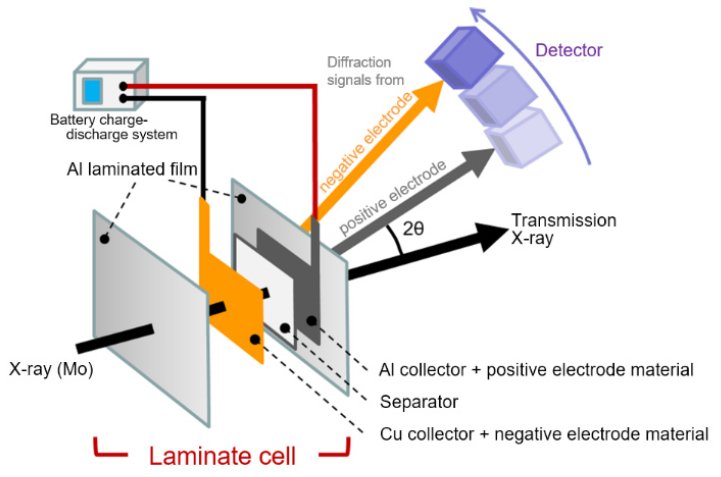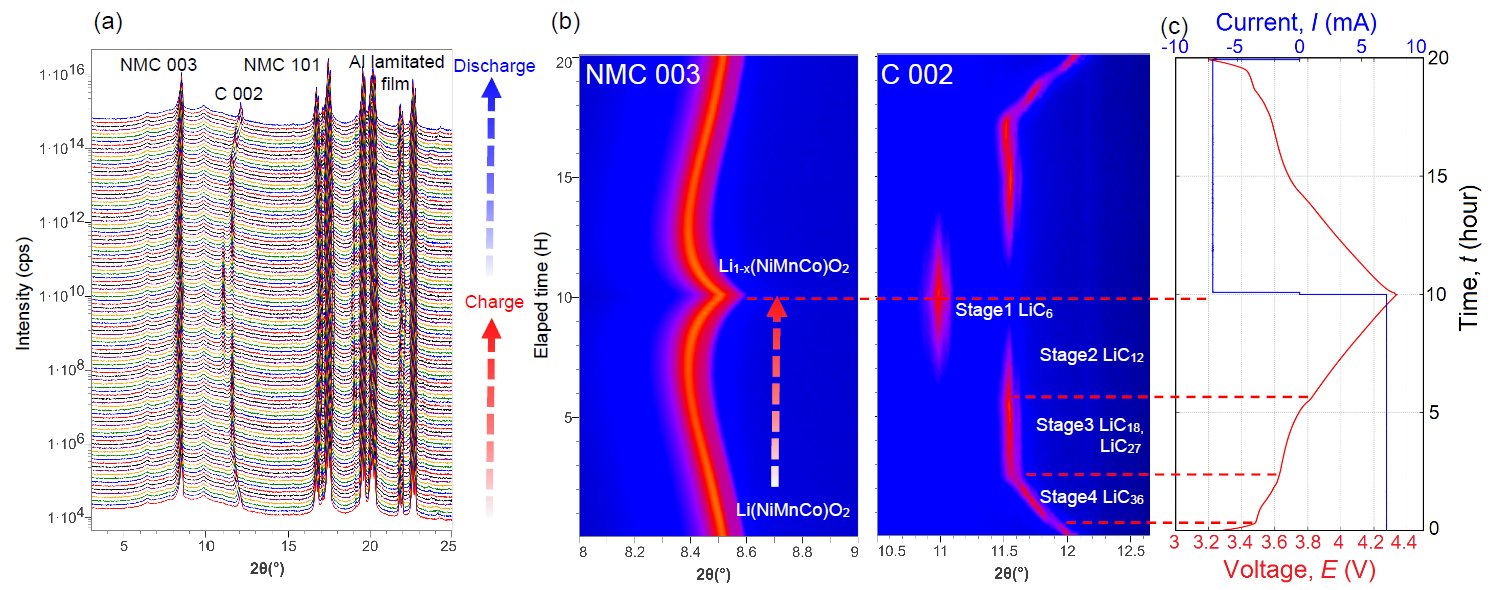Application Note B-XRD1123
Introduction
Because of their high energy and power densities, lithium-ion batteries have been used as power sources for portable electronic devices such as laptop computers and mobile phones. To characterize the battery, X-ray diffraction is frequently used. Operando XRD measurement, which provides the crystal structure change of the positive and negative electrode materials in the battery during the charge-discharge process, gives important information about the battery, such as reaction state, deterioration characteristics and structural details. Using transmission geometry with a Mo source, it is possible to simultaneously measure changes in the crystal structure of the positive and negative electrode materials of a laminate cell which has a structure similar to what is found in commercial batteries.
Measurements and results
Transmission XRD measurement was performed on a laminate cell (often called a “pouch cell”) with NMC (Li(Ni, Mn, Co)O₂) as the positive electrode material and graphite (C) as the negative electrode material, using a Mo ray source with high transmission power. Figure 1 shows an overview of the measurement outline.
Figure 2 shows (a) the X-ray diffraction whole profile, (b) diffraction peak changes in the positive and negative electrode materials and (c) the charge-discharge profile (the charge-discharge current: 0.1 C = 7.0 mA). Due to the lithiation-delithiation reaction during the charge-discharge process, the lattice constant of NMC changed and the graphite transitioned to intercalation compounds such as LiCₓ.

Figure 1: Schematic of 0perando XRD measurement (transmission geometry) for laminate cells.

Figure 2: The results of operando XRD measurement of a laminate cell. (a) X-ray diffraction whole profile (b) Diffraction peak changes of positive and negative electrode materials (c) Charge-discharge profile
References:
K.Ishidzu, Y. Oka, T. Nakamura : Solid State Ionics 288 (2016), 176-179.
Sample provided by : Toray Research Center, Inc.

